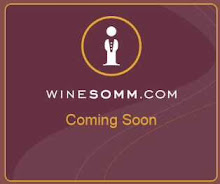March Restaurant, 2000
A delightful couple orders a bottle of 1982 Pichon Lalande for the low low price of 582 dollars. The gentleman was promptly tasted on the wine to assess its quality. Everyone agreed that the wine was sound and ready to be enjoyed. At the end of their meal, upon paying the check, the couple had again requested to view the wine list. A serious red flag for any Sommelier.
As it turns out, the 582 dollar bottle was viewed as an $82 dollar bottle. Mistaking the number 5 for a dollar sign. Apparently my mans eyesight had started to take a turn for the worse in his later years, though his wife's sense of humor was well intact. I don't think I have ever seen anyone laugh so hard before. Now, I could feel bad about this but there was very little I could do at this point. Even though they enjoyed such a great bottle with the notion that it was worth $82 bucks, what they ended up with is a story that is priceless and I'm sure gets told at least once a year ever since. Money well spent.
-1982 Chateau Pichon Longueville Comtess de Lalande, Pauillac, Bordeaux, France
BLT Steak, 2006
While I don't often get star struck, there are a few occasions where you really cant help but feel the presence of an icon while in your dining room. On this particular evening it was my friend Robert Kamen of Kamen Winery in Sonoma County that arrived with his guests Harrison Ford and Keenu Reaves for a memorable evening. Robert's success in writing screenplays (Karate Kid, The Fifth Element, Transporter etc..) have paved the way for his passion in wine making. After a good time, copious amounts of wine, we proceeded to enjoy a bottle of fine ice wine all the while Harrison impressively had created a turban out of his button down shirt. Would you expect anything less from Indy?
-2004 Kamen, Cabernet Sauvignon, Sonoma County, California
-2003 Inniskillin, Rose of Cabernet Franc Icewine, Niagra, Canada
Apiary Restaurant December 2009
This holiday season a young man had approached me at Apiary inquiring about a pork belly dish Chef Scott Bryan had put together for our winter menu. "Crisp pork belly served with a slow poached egg over stewed lentils topped with pecorino cheese". This was to be a gift for his girlfriends father in Wisconsin this year to obtain some serious brownie points as he is a dedicated Scott Bryan fan. When asked how he was going to get such a delicate dish all the way to Wisconsin, the answer was to freeze it. I'm really not sure how well that dish travels, so I had suggested maybe he get the dish with the poached egg left off and self prepare it at the final destination. While I don't know how well the integrity of the dish held up, I suppose its the thought that counts here.
Though wine had only been suggested for this dish, It was a high acid white wine from the Kamptal region of Austria paired to cut the richness of the pork belly and egg yolk yet play well with the stewed lentils and cheese.
-2007 Loimer, Gruner Veltliner, Smaragd, Kamptal, Austria
Side Note: Every monday night at Apiary in NYC we host a BYO- No Corkage Night and While my wine list gets little or no play, the wines that show up prove to be an outstanding experience in palate tuning and education.
Never a dull moment in the food and wine industry. Whats even better, is that anybody that makes a point of sorounding themselves with a bottle of wine, good food, or good company has generally got a great demeanor and is a lot of fun to be around. Drink well...
BF
